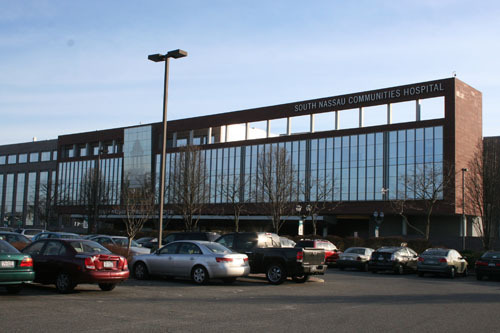State budget impacts South Nassau Communities Hospital
But hospital feels confident in its financial future
Under Gov. Andrew Cuomo’s proposed budget plan, South Nassau Communities Hospital may lose around $2 million in state funding, but hospital officials say they believe it is a storm the institution can weather.
Late last year, when the hospital was preparing its 2011 budget, it was expecting to lose 8 or 9 percent of its state revenue — about $3.5 million. But when the governor’s proposed cuts were announced, it turned out that SNCH was in danger of losing only about $2 million. It’s still a significant amount, hospital officials acknowledge, but not as bad as it could have been.
“Every dollar that we’re losing goes right to our bottom line,” said Mark Bogen, SNCH’s vice president for finance. “So right now, though it looks somewhat promising, every dollar we lose comes directly from the hospital’s bottom line.”
Although the hospital’s annual budget is larger than that of most municipalities in the area — about $400 million — it collects money differently than taxing entities like school districts and villages. Tax-levying municipalities tax their residents, collect the money and then spend it. Any more money than what is earned through taxes generally comes from aid money or borrowing.
South Nassau, however, collects money more like a business. “We bill and collect for services rendered on a daily basis,” explained Bogen. “We don’t have huge philanthropy yet here on the South Shore. We get some money in grants, but not a whole lot. We rely almost exclusively on collecting for services rendered in order to continue the operation of the organization.”
According to Bogen, only about 5 or 6 percent of the hospital’s total budget comes from New York state, in the form of Medicaid. The largest portion of its funding comes from federally sponsored Medicare — about 50 percent of the money the hospital takes in. “For us, the Medicare is the single largest population we serve, primarily because that’s the fastest-growing age cohort on the South Shore of Long Island,” Bogen said. For the most part, the rest of the hospital’s funding come from payments from private insurance companies.






